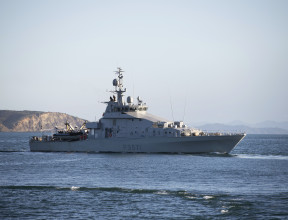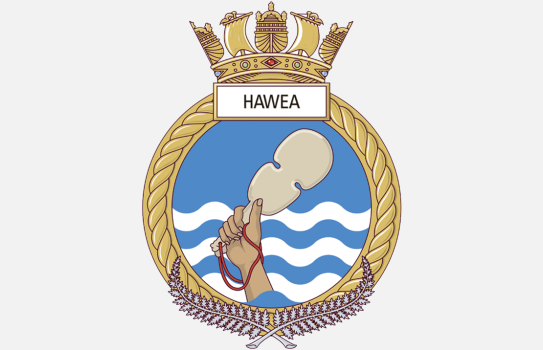HMNZS Hawea
HMNZS Hawea is a Lake-class inshore patrol vessel of our Royal New Zealand Navy. It is one of the Navy's two Inshore Patrol Vessels (IPV). The ships are designed for maritime surveillance and patrol missions around New Zealand’s 15,000-kilometre coast and out to the 200 nautical mile limit of our Exclusive Economic Zone (EEZ).

HMNZS Hawea's primary mission is to ensure the security and prosperity of New Zealanders by undertaking maritime security patrols, surveillance, boarding operations and response to search and rescue call-outs.
Conceived as part of Project Protector, the Inshore Patrol Vessels were built in Whangarei by BAE Systems Australia (formerly Tenix Shipbuilding).
Hawea was delivered to the Ministry of Defence and commissioned into our Royal New Zealand Navy on 1 May 2009. Hawea is the third ship of this name to serve in the Royal New Zealand Navy and is named after Lake Hawea.
Our two Inshore Patrol Vessels, HMNZS Taupo and HMNZS Hawea, have fully automated control and navigations systems, powerful engines, modern communications and surveillance systems, active stabilisers and comfortable accommodation. Using the two RHIBs (Rigid Hull Inflatable Boats) onboard, both ships can undertake boarding operations, surveillance and transport personnel. The RHIBs are launched using two automatic davits near the stern of the vessels. The ships are highly manoeuvrable and capable of speeds up to 25 knots (46 kilometres per hour).
They regularly work with government agencies such as Primary Industries (fisheries), Customs, Police and the Department of Conservation and frequently visit ports throughout the country.
Homeport: Greymouth/Westport
Ship Sponsor: Lady Sandra O’Regan
Ship's Badge

HMNZS Hawea's Badge
Motto: Kia Toa (Be Brave).
The design for this badge was submitted by the first Hawea ship, a Loch Class Frigate commissioned in 1948. The design features a Māori weapon, a kotiate with wavy lines representing the sea. The concept arises from the history of Lake Hawea which was the scene of settlement of at least four tribes who successively overcame and drove out their predecessors. A kotiate is a Māori weapon that is usually made of whale bone or hardwood and the leading edge is ground to a fine, sharp finish. The knop (end of the handle) has a carving, usually a stylized human face, and a hole through which a leather thong is fixed which is wound around the thumb to prevent the hand slipping when the jab is made.
The badge was finally approved in March 1951. The second Hawea, a Lake Class Patrol Craft also used this badge and carried out some of the important multi-agency tasks that our current HMNZS Hawea is engaged in.
Hawea was named by the Ship Sponsor, Lady Mrs Sandra O'Regan and is affiliated to the Greymouth / Westport (West Coast) region.
Operations
-
Surveillance and reconnaissance around NZ coastline
-
Counter-terrorism
-
Search and Rescue
-
Interception and boarding
-
Apprehension and escort of vessels
-
Humanitarian Aid and Disaster Relief
-
Support for other government agencies, including Police, Primary Industries, Customs and Department of Conservation
-
Vertical replenishment by helicopter
-
Pollution patrol
-
Sea training for the Navy
Specifications
|
PENNANT # |
P3571 |
|---|---|
|
Displacement |
340 tonnes |
|
Beam |
9 metres |
|
Draught |
2.9 metres |
|
Length |
55 metres |
|
Speed |
25 knots |
|
Range |
3,000 nautical miles |
|
Complement |
24 (core crew), 4 (Govt. agencies), 10 (additional personnel) Total 38 |
|
Propulsion |
2 x MAN B&W 12V P185 Diesel Engines |
Armament
|
Main Gun |
Nil |
|---|---|
|
Helicopter |
Vertical replenishment (no flight deck) |
|
Small Arms |
Numerous small arms ranging from .50-calibre machine guns to 9mm pistols |